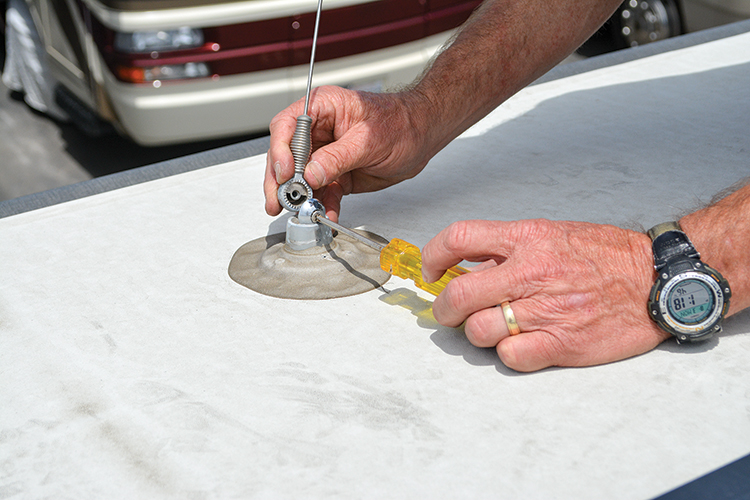Shielding an RV from Mother Nature’s worst not only protects its good looks but prolongs the lifespan of your investment
If it weren’t for pesky things like a budget, homeowner association rules, time and space, we would all have RV garages to protect our rigs. But unless you live in an RV community or have lots of property in an area with limited homeowner regulations, it’s unlikely you will ever be allowed to construct an RV garage on your lot. Many owners rely on offsite storage, and in some cases, those facilities offer covered storage — but, of course, the cost is much higher than storing the RV in an uncovered lot. In our case, we have a large driveway at home but do not enjoy the benefits of an RV garage. For us, the best solution is an RV cover.
An RV is a major financial investment — not only the initial purchase but also the maintenance and upkeep. Covering the RV helps protect the appearance and resale value, and also lowers monthly maintenance costs. By protecting the exterior with a cover, the caulk joints, acrylic roof vents, skylights and paint all stay looking new. It’s a small price to pay to prolong the life of your RV.
In most cases, for the price of covered storage for a few months, you can purchase a cover and keep your RV protected when it is not in use. For some reason, there is a misconception that RV covers are hard to use or can damage the finish, but our experience is just the opposite. Covers such as Camping World’s new Elements brand, which we used, are soft and do not damage the exterior surface, plus they offer protection from weather and UV exposure.
Keeping an RV covered when not in use makes a big difference in the appearance of the unit over time. If you notice the condition of a trailer that stays outside and uncovered, you will see the signs of UV damage. The rubber around windows starts to get chalky, and the paint, gel coat, decals and trim will start to deteriorate in just a few years, if left unprotected. Uncovered tires will show cracks around the sidewall areas.
A big concern of some owners is getting the cover on the roof and installing it properly. We found that most people who can climb on the roof can also install a cover, if they follow the right steps, assuming the roof is designed to be walked on.. Climbing a ladder always has risks, so proceed with caution and make sure you have a helper with you in case you need assistance. All you really need is some self-confidence, a good pair of shoes (no flip-flops or slip-ons) and the desire to protect your RV.
Of course, if you are a full-timer, covering up is not an option, but for those of us who store our RV for part of the year, covering it makes a lot of sense.
Elements RV Covers
The new Elements All Climate cover we installed is different from other major brands, and it offers several advantages. When compared to other brands, the sides are made from a heavier material to ensure they last longer. It also has a heavy-duty Tyvek roof panel that is 10 percent stronger than other brands you may have used in the past.
The Elements cover blocks 99.8 percent of UV rays and features three-layer construction to help make it last. Unlike tarps or poly sheets, the fabric actually breathes to let moisture pass through the material, which eliminates trapped moisture. It has vented sections on the front, rear and both sides to improve airflow, which help eliminate mold and mildew, even when the RV is stored for long periods of time. The cover also comes with handy tie-down straps that go under the RV to prevent it from flapping in the wind or being blown off during storms.
Another major advantage is that the front and rear areas are reinforced with elastic inserts. This elastic really makes a big difference in keeping a tight fit. The cover also has an integral inner panel sewn into the backside to help prevent it from wearing on the front and rear bumper areas.
The sides extend down completely, so the trailer is covered from top to bottom. For those who need access while the RV is covered, full-length zipper panels allow easy in-and-out privileges on the entry side.
Elements covers carry a two-year warranty. Prices range from less than $200 for small folding campers to $550 for the largest fifth-wheels, with sale pricing often available.
www.campingworld.com/elements
Cover to Cover
Help fend off the damaging effects of weather by selecting the right cover for your RV |







